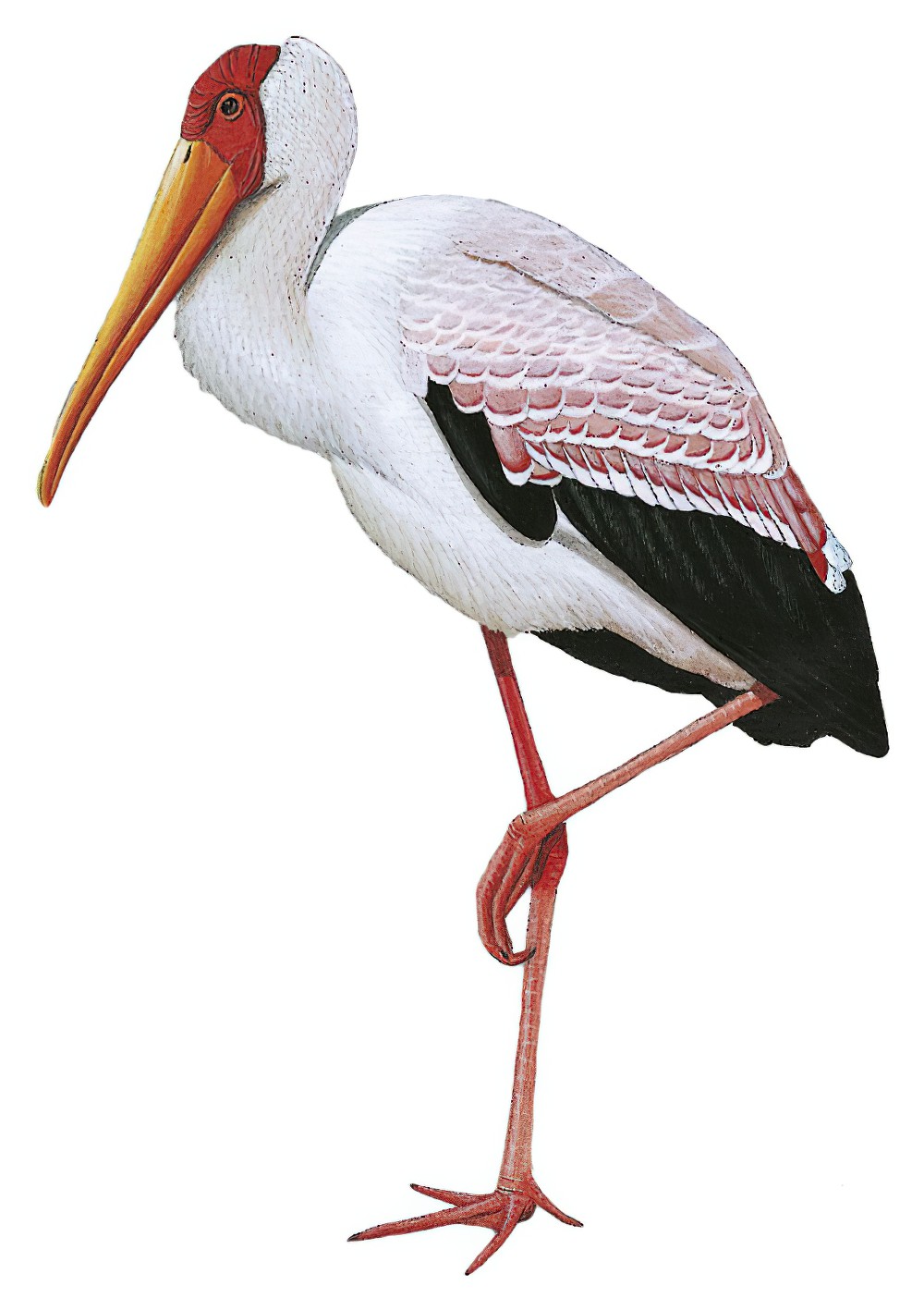Yellow-billed Stork / Mycteria ibis

Yellow-billed Stork
SCI Name:
Protonym: Tantalus Ibis Syst.Nat.ed.12 ed.12 p.241
Taxonomy: Ciconiiformes / Ciconiidae / Mycteria
Taxonomy Code: yebsto1
Type Locality: Egypt.
Author: Linnaeus
Publish Year: 1766
IUCN Status: Least Concern
DEFINITIONS
MYCTERIA
(Ciconiidae; Ϯ Wood Stork M. americana) Gr. μυκτηρ muktēr, μυκτηρος muktēros snout, nose < μυκτεριζω mukterizō to turn up the nose; "74. MYCTERIA. Rostrum maxilla superiore triquetra rectissima subadscendens, acutum, Maxilla inferiore trigona acuminata adscendens. Nares lineares. Lingua nulla. Marcgr. Pedes tetradactyli." (Linnaeus 1758); "Mycteria Linnaeus, 1758, Syst. Nat., ed. 10, p. 140. Type, by monotypy, Mycteria americana Linnaeus." (Kahl in Peters 1979, I, ed. 2, 245). Linnaeus's Mycteria comprised a single species.
Var. Micteria.
Synon. Diplocercus, Diplura, Dipluravis, Dissourodes, Ibis, Pseudotantalus, Tantalides, Tantalops, Tantalus.
mycteria
Gr. μυκτηρ muktēr, μυκτηρος muktēros snout < μυκτεριζω mukterizō to turn up the nose.
● ex “Jabirú” of Marcgrave 1648 (Jabiru).
ibis
L. ibis, ibidis ibis < Gr. ιβις ibis, ιβιδος ibidos ibis. The Greek authors recognised three different types of ibis: the Glossy Ibis, the Sacred Ibis, and the Northern Bald Ibis or Waldrapp.
● "76. ARDEA. ... Ibis. 18. A. capite lævi, corpore albo, rostro flavescente apice pedibusque nigris. Ardea Ibis tota alba, pedibus atris, unguibus arcuatis maximis. Hasselqv. itin. 248. β. Ibis nigra. Raj. av. 98. Habitat in Ægypto; regionis purificator. Bellonii Ibis rostro arcuato, nigra est; at Plinius X: 30. Ibis circa peluscum tantum nigra est, cæteris omnibus locis candida." (Linnaeus 1758). The Swedish explorer Fredrik Hasselqvist (1722-1752) was persuaded by his Egyptian dragoman that the Cattle Egret was, in fact, the sacred ibis of the ancients. His papers eventually found their way to Linnaeus, who unwittingly perpetuated the deception in the egret’s specific name (Bubulcus).
● ex “Ibis blanc” of Brisson 1760 (Mycteria).
Ibis
L. ibis, ibidis ibis < Gr. ιβις ibis, ιβιδος ibidos ibis. This name has been confused over the centuries. The Sacred Ibis was venerated by the ancient Egyptians, but the Glossy Ibis was equally common in that country. By the time modern ornithologists and explorers arrived the Sacred Ibis was either extinct or fast disappearing in Egypt, and the name gradually attached itself to other stork- or heron-like birds (for example, the Cattle Egret).
● (?syn. Eudocimus Ϯ Scarlet Ibis E. ruber) (see below)
● (syn. Mycteria Ϯ Yellow-billed Stork M. ibis) "117. IBIS, Ibis. Bec long, fort, tranchant, et émoussé à son extrémité; des places dénuées de plumes sur la tête." (de Lacépède 1799); "Ibis Lacépède, Tabl. Ois., 1799, p. 18. Type, by tautonymy, Ibis candidus Daudin = Tantalus ibis Linné." (Peters 1931, 1, 126).
● (syn. Plegadis Ϯ Glossy Ibis P. falcinellus) "80. EGYPTISE KRAAN, in 't Latyn Ibis, By BELON. L. IV. c. IX. SEBA Thes. I. t. 62 f.3." (Moehring 1758). In effect, Moehring's name is unidentifiable. Belon's 1555, plate illustrates the Glossy Ibis; his text refers both to the Glossy Ibis and to the Sacred Ibis. Seba's 1735, plate illustrates the Scarlet Ibis (named Avis Porphyrio, Amboinensis). Var. Jbis.
● (?syn. Threskiornis Ϯ Sacred Ibis T. aethiopicus) (see above)
UPPERCASE: current genus
Uppercase first letter: generic synonym
● and ● See: generic homonyms
lowercase: species and subspecies
●: early names, variants, mispellings
‡: extinct
†: type species
Gr.: ancient Greek
L.: Latin
<: derived from
syn: synonym of
/: separates historical and modern geographic names
ex: based on
TL: type locality
OD: original diagnosis (genus) or original description (species)












